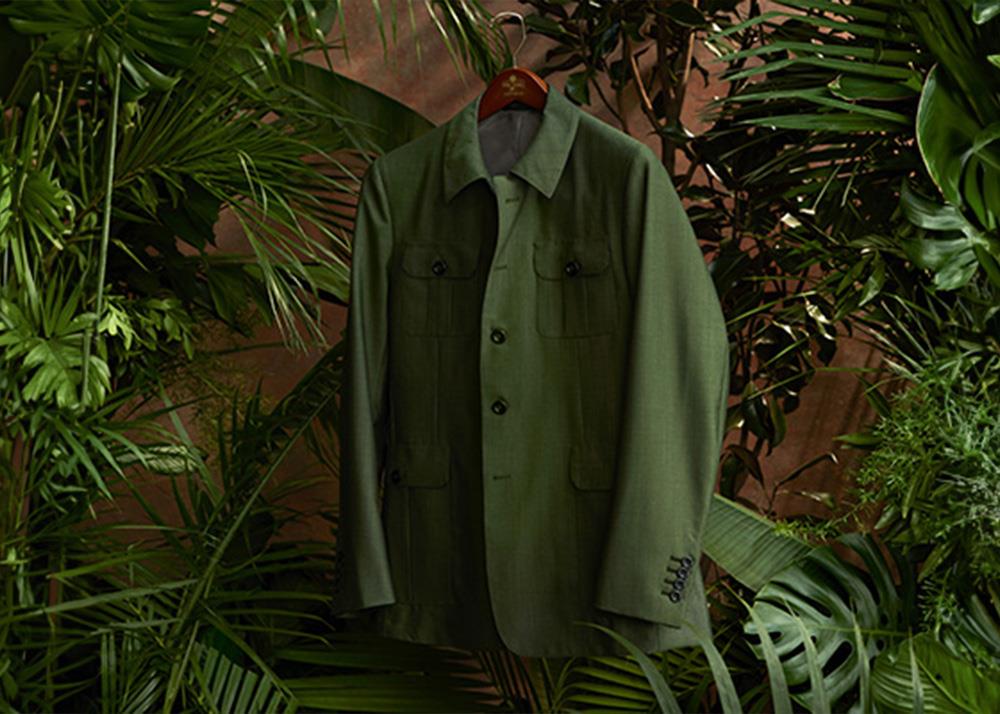Stay Ahead of the Curve by Exploring Innovative Fashion Patterns
In a market as vibrant as fashion, remaining in advance entails more than simply adhering to present patterns-- it requires an expedition of advancement. The merging of innovation and style declares a new period of consumer engagement.

Accepting Smart Textiles
In the last few years, the apparel industry has actually observed a transformative change with the integration of smart fabrics, an advanced technology that mixes innovation with textile. This advancement represents not just a fusion of appearances and capability however also a significant jump in the direction of sustainability and customization in fashion. Smart textiles, likewise understood as e-textiles, installed innovative electronics such as sensors and conductive strings within the textile, enabling garments to interact with the environment or the wearer.
These fabrics are developed to keep track of physiological parameters, such as heart price or body temperature level, offering real-time health and wellness analytics. Past health applications, wise fabrics are also being used for adaptive clothes, which can change color or pattern in reaction to environmental stimulations, hence providing a dynamic fashion experience.
Additionally, the growth of energy-harvesting fabrics that create power from activity or sunshine is leading the way for self-sufficient wearable innovation. This advancement is attracting environmentally conscious consumers and designers aiming to minimize the ecological impact of style. As research study and growth in this area advance, clever fabrics are anticipated to come to be progressively widespread, improving the landscape of contemporary fashion with their multifunctional abilities.
The Rise of 3D Printing
Transforming the production landscape, 3D printing has actually emerged as a game-changer in the fashion market. This sophisticated modern technology has actually made it possible for developers to push the limits of imagination, generating detailed and personalized garments that were previously unthinkable. By leveraging digital design and additive production, 3D printing facilitates the creation of complex geometries and patterns, permitting developers to explore brand-new textures and structures.
A significant benefit of 3D printing in style is its ability to generate on-demand, reducing waste and reducing stock demands. This effectiveness not only enhances production procedures but additionally enables rapid prototyping, allowing designers to bring their visions to life in a much shorter duration. Additionally, 3D printing supports customization somewhat unparalleled by standard methods, offering individualized fits and unique styles customized to individual consumer choices.
The increase of 3D printing has likewise equalized style, making it accessible to arising developers who can now fabricate premium pieces without considerable financial investment in traditional production framework. As modern technology remains to advance, the apparel industry is poised to harness the complete possibility of 3D printing, discovering brand-new materials and strategies that will most certainly redefine exactly how fashion is conceived and created.
Lasting Style Advancements
As the style sector comes to grips with the pressing requirement for ecological obligation, sustainable style advancements have arised at the leading edge of transformative adjustment. The growing understanding of environmental effect has sustained a shift in the direction of even more eco-conscious methods and materials. Brands and developers are currently focusing on sustainability, incorporating methods that lessen waste and decrease carbon impacts.
One significant development is the rise of round fashion, which emphasizes recycling and upcycling to expand the lifecycle of garments. This strategy not just decreases waste however additionally motivates consumers to adopt a much more mindful method to clothes consumption.
Another advancement hinges on the fostering of innovative dyeing methods that use waterless processes or all-natural dyes, thereby decreasing the huge amounts of water and chemicals traditionally used in fabric dyeing. Additionally, innovations in biotechnology have actually resulted in the creation of lab-grown natural leather and materials, using cruelty-free and eco-friendly choices to standard materials. With these pioneering initiatives, the style market is making meaningful strides towards a more lasting future.

Tech-Integrated Garments
Tech-integrated apparel represents a revolutionary combination of style and innovation, improving how people interact with their clothes. This ingenious domain is marked by the inclusion of wise textiles and embedded electronic parts, improving both functionality and aesthetic charm. From fitness trackers embedded in sportswear to warmed coats managed via smart device applications, tech-integrated clothing supplies consumers extraordinary benefit and versatility.
Pioneering brand names are driving this trend, concentrating on producing garments that react to environmental stimulations or customer commands. For instance, some garments can transform color or pattern in action official statement to temperature level changes, while others include biometric sensing units to keep an eye on health metrics like heart rate or stress levels. The smooth combination of innovation right into fabrics also includes ecological sustainability, with initiatives to establish self-cleaning fabrics or garments that readjust to weather, thus minimizing the demand for numerous layers.
In addition, the development of wearable modern technology is not just restricted to garments yet reaches accessories like watches and glasses, more expanding the extent of tech-integrated style. As the sector remains to introduce, the capacity for customization and customization in clothing grows, supplying customers unique, tech-enhanced style experiences that accommodate their private demands and choices.
Future of Virtual Style
In recent times, the future of online style has become a transformative pressure within the market, leveraging developments in digital technology to redefine how style is produced, experienced, and taken in. By incorporating increased reality (AR), online reality (VR), and 3D layout devices, designers can currently craft immersive and interactive experiences that transcend conventional style limits. Digital style enables the production of garments that exist entirely in digital atmospheres, supplying limitless opportunities for innovation without the constraints of physical manufacturing.
This digital change not only provides opportunities for imaginative expression yet likewise addresses sustainability concerns integral in standard fashion practices. Cape Town Sustainable Fashion. By eliminating the demand for physical resources, online fashion decreases waste and reduces carbon impacts. In addition, the surge of virtual fashion lines up with the increasing customer demand for special and tailored experiences, as digital garments can be personalized and customized to individual preferences easily

Verdict
The style industry's future lies in the assimilation of innovative my explanation innovations and sustainable techniques. Digital style is positioned to redefine customer interactions.
In recent years, the style market has actually seen a transformative change with the assimilation of clever fabrics, a cutting-edge development that blends technology with fabric.As the fashion market grapples with the pushing need for ecological responsibility, lasting fashion innovations have arised at the center of transformative modification.In recent years, the future of digital style has actually emerged as a transformative pressure within the industry, leveraging improvements in electronic innovation to redefine how fashion is created, experienced, and consumed. The rise of digital fashion aligns with the increasing consumer need for tailored and one-of-a-kind experiences, as virtual garments can be customized and customized to specific choices with ease.
The style market's future lies in the assimilation of cutting-edge innovations and lasting techniques.